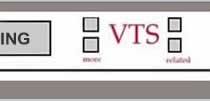
























 |
 |
 |
 |
||||||||||||||||
 |
 |
 |
|||||||||||||||||
 |
 |
 |
 |
 |
 |
||||||||||||||
 |
 |
 |
 |
 |
 |
||||||||||||||
 |
 |
 |
|||||||||||||||||
 |
 |
 |
|||||||||||||||||
A SECOND GALLERY
OF HALF FRAME IMAGES
Thomas Holloway amassed a fortune with his sales of pills and ointment which he used to found a Sanitorium at Virginia Water and an institute of higher education for women the Royal Holloway College at Englefield Green. He was a passionate believer in the economic power of advertising, starting in the 1830's with a saturation coverage using classified ads, growiing in ambition until in the early 1880's he was spending more than £50,000 a year on advertising, making Holloway one of the richest men in England. For a summer in 1972 Oriole and I taught a group of delightful and gifted American students at the College on a course organised by Scholastic International. The group included the young Donald Margulies later to make his name as a playwright; Fred Kaplan later my favourite read on American defence matters (both Pulitzer prize winners). Tommy and Matilda James came with their class from Little Rock Arkansas, where they had staged Romeo and Juliet as a race drama. One student who had recently won the Miss Pink Tomato Competition back at home proved to have insightful interpretations of the lighting structure of J.L.David's Death of Marat that left the lecture audience floored. One evening while showing one student, Paige Amidon, the protocols for ordering a take-away Chinese meal in Windsor, Oriole and I narrowly missed being involved in a gangland brawl with knives in the courtyard outside. As we drove away with the steaming bag of food, the Police had the restaurant surrounded. What compounded these experiences was the dreamlike context of the College itself, a facsimile of Chambord in red brick, designed by the architect of Rochdale Town Hall, W.H.Crossland. The corridors with intermittent seating bays stretched as far as the eye could see, the facades glowed in the sun, and sculptural monsters and thugs glared down at any male presence that dared to disturb this all female institution. In researching the building I found a reference in the periodical press of the 1880's to the kitchens being supplied from the Lodge Gate by a small dedicated railway engine with wagons driven by a team of women Engine Drivers. Checking my notes the original source of this surprising development cannot be found, but I record it nevertheless as an amusing conceit. What impressed me was the economic power of the man who decided to have an art gallery for the academic launch of the College , so appointed a Curator and within a space of weeks, acquired one, providing us with an accurate cross-section of what was available on the London Art Market at one particular time. The presence of Edwin Long's Babylonian Marriage Market caused much merriment. In the courtyard outside in a tender pose was a sculptural piece of Holloway himself minstering to his seated wife - a sort of cake like structure. Looking through the press from the 1840's, and in particular PUNCH, it is clear how much Hollway was held up to ridicule for his extravagant claims for his nostrums and the spread of his advertising over the streets of Britain. The foundation of the College and the Sanatorium were clearly his claim to fame and dignity that the source of his wealth could never have achieved. My photographs of the RHC are gloriously gritty, having spent 38 years as half frame slides in a sealed box. A great discovery was the appearence throughout of evanescent blue spots on the surface. The drawing of the Sandwich Board Man is by W.M.Thackeray. The class, having completed the London section of their studies moved on to Pris and the Lycee Michellet about which I remember little, beyond noticing that there were Swastikas on the water taps, a remnant of the days of Occupation. Dedicated to those amazing kids who sat through my lectures and subsequently feutured regularly in my memories. HIS ADVERTISING
|